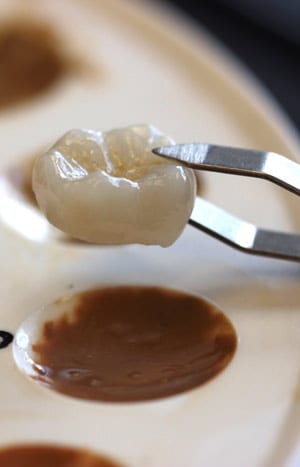
Zirconia
Zirconia has been available for many years now, but early Zirconia was white and somewhat opaque, which occasionally compromised the final result. Today the best systems offer alternatives in translucency and in a range of colours.
Zirconia restorations can be either a core of zirconia with layering of porcelain to give the fine aesthetic results needed anteriorly, or the more recently introduced full contour zirconia restorations; sometimes known as ‘monobloc zirconia’. These are extremely strong and somewhat translucent materials suitable for posterior crowns or bridges which are surface stained to give characterization.
Did you know that not all Zirconia is the same? There are many manufacturers of zirconia in different parts of the world. The production of the base material must be conducted in a highly controlled and clean environment if the quality of the product is to be consistent. The grade and purity of the powder, the particle sizes and distribution together can affect strength and translucency. Also the method of manufacture (the type of pressing) has effects that must be considered.

More information …
Many zirconias are pressed in only one direction; this is called uniaxial pressing, and produces blocks that are inconsistent in density from one part of the material to the other. This variation in density results in uneven shrinkage which can lead to poorly fitting margins; particularly for bridge spans, and a greater percentage of faults during the milling process (chips and micro-cracks). Uni-axial pressing is a cheaper process, so reducing the cost of the zirconia. Isostatic zirconia is pressed evenly from all directions. This results in an even density over the whole block and can be relied on to produce consistent and accurate margins whether milling single units or large spans. Isostatically pressed zirconia is more expensive to produce but in the case of dental restorations where the marginal fit, strength and longevity are crucial, we believe this should be the minimum standard to adopt.

Dental Implants

Crown & Bridge

Prosthetics

